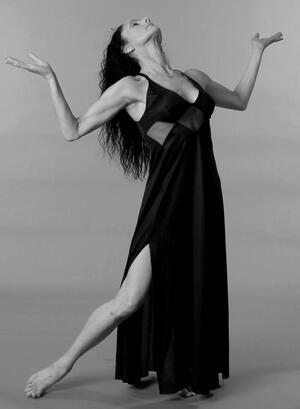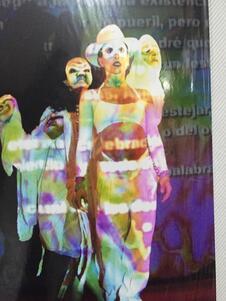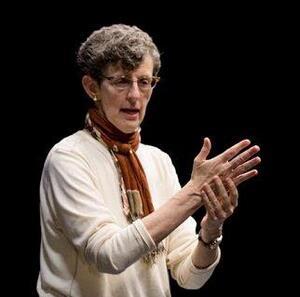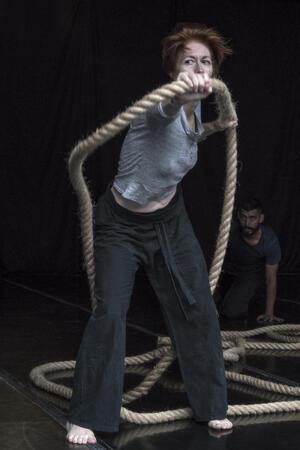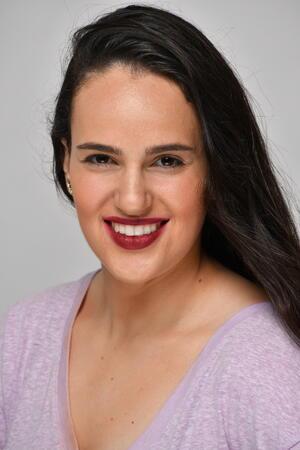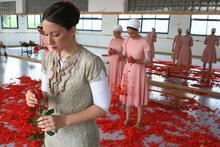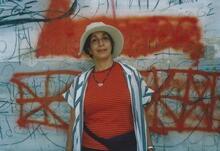Dance in Mexico
This entry provides a brief overview of the work of twenty Jewish women who have devoted themselves to various aspects of dance in Mexico. Their incursion into Israeli folk dance fostered in them an interest in dance as well as a sense of belonging to their community. They have made significant contributions to dance performance, creation, and education and been involved in alternative projects. Some became artists who forged professional careers in Mexico and other countries, with or without ties to the Jewish community; others developed and taught various forms of body movement research. Each devised her own strategies to advance artistically and professionally in dance.
Background: Mexico’s Jewish Community
Although Jews first arrived in Mexico in the sixteenth century, Jewish immigrants did not begin to settle in the country in large numbers until the late nineteenth and early twentieth centuries. Today, only 40-50,000 of Mexico’s population of more than 125 million are Jews, and 95% of the Jewish population lives in Mexico City.
Based on the principle of "mutual aid," Jews in Mexico congregated according to the regions, countries, and even cities from which they came. There are six major Jewish communities in Mexico: Mount Sinai (or Shamis, who come from Damascus, Syria, and Israel), Ashkenazi (from Central and Eastern Europe), Magen David (or Halebis, from Aleppo, Syria), Sephardi (from Turkey, Greece, and the Balkans), Beth Israel (from the United States), and Bet El (a split from the Ashkenazi group). Together they form a "community of communities" (Dayan&Roitman, 2016: 97); despite differences, the community is united based on shared "fundamental precepts of life" (Zárate, 1983: 51).
Since their arrival in Mexico, Jewish women have played a central role in preserving culture and strengthening family and community ties. They entered the public sphere primarily through welfare and charitable organizations. Today, women have expanded their field of action to the business world, academia, art, science, government institutions, and Mexican social and political organizations.
Mexico’s Jews share a strong feeling of "belonging, showing a high rate of continuity with little assimilation"; only 6% of marriages are exogamous, and the acceptance of non-Jews and even converts is limited. At the same time, Mexican Jews "have strong ties to the country, both in the area of work and to its culture," and some occupy important positions in all spheres of Mexican life (Dayan&Roitman 2016: 89, 109). Since 1945, community voices have increasingly called for Judeo-Mexican integration, and Mexican society now shows greater openness towards "diversity and otherness" (Bokser). Mexican-born Jews recognize themselves as Mexican, their language is Spanish, some have Mexicanized their names, and they consider their community to be "not culturally encapsulated within the country” but rather integrating itself into the "great national mosaic" (Zárate, 1983: 59). Some speak of a "Judeo-Mexican identity" (Hernández: 2018), and some dancers refer to the pride of having "multiple identities": as women, Jews, and Mexicans.
The varied Mexican Jewish communities coexist in Mexico City’s Israelite Sports Center (Centro Deportivo Israelita CDI), founded in 1950, at which social, sporting, and artistic activities bring people together. The Center hosts the Aviv (Spring) Festival, an annual amateur dance competition for community centers, school groups, and people with disabilities from Mexico and other countries. It is a spectacular social and artistic eventthat promotes folk dances as a means of self-representation, illustrates aspects of Jewish history, and helps strengthen the ties of its members to the community from an early age. At each ethnic group’s community centers and schools (95% of Judeo-Mexican children attend fourteen private schools), traditional practices are encouraged, including folk dance, which is recognized as an element of community and inter-community identity and cohesion. (Private studios and outreach centers promote other forms of dance.) Thus, children and teenagers (includinga growing number of males) dance, and everybody prepares to participate in the highly competitive Aviv Festival.
Although the Mexican Jewish community promotes folk dance, it does little to foster professional dance, which lacks social recognition in Mexico both within and outside the Jewish community. Dance is regarded as a "feminine" activity because of its relationship with the body and with non-verbal communication, and because it is subjective, artistic, "unproductive," and "fit for the weak" (Tortajada, 2011: 14). It also offers scant guarantee of economic stability and may "encourage voluntary desertion" (Dayan&Roitman, 2016: 111) of Jewishness, as it requires interactions outside the community.
There were two Jewish choreographers, however, who marked a watershed in the history of the Mexican professional dance. Anna Sokolow (1910-2000) came to Mexico in 1939, at the same time as her fellow North American Waldeen Falkenstein (1913-1993). Together, they gave rise to Mexican modern dance, which took on a strong nationalist tone under their disciples, the Sokolowas and the Waldeenas.
Mexico now has a dynamic professional dance field that includes various genres, companies, training centers, and theaters, both institutional and independent. The National Institute of Fine Arts (Instituto Nacional de Bellas Artes INBA) is the most important public institution dedicated to artistic education, creation, and dissemination in the country and is the primary space for training dancers. It is home to six professional dance schools and the National Dance Company (Compañía Nacional de Danza CND), the most prestigious Mexican ballet company. In addition, numerous public and private institutions provide formal and informal dance training in many genres. The variety is huge: college careers, arts centers, small studios, companies that have their own schools, programs with or without official recognition, free workshops, and more.
Professional Jewish dancer have shown greater interest in contemporary dance, although this trend appears to be changing. Their trajectory has been more or less constant: they began their training in folk and/or contemporary dance in their schools, community centers, the CDI (some included sports training, especially Olympic gymnastics), private studios, and the Aviv Festival. Once they decided to engage more rigorously in dance, they left their community to access the official INBA schools that provided formal education (Bachelor’s degrees since the 1990s), or the established company schools and private studios. Some studios were not officially certified, as in the case of jazz studios or others dedicated to a dance genre that was considered "commercial" (like musicals and television), but also involved a disciplined work and coexistence with the whole Mexican society.
Folk dance: the source
Carlos Halpert (1946-1984) was a leading figure in Jewish folk dance in Mexico. Together with Ana Mérida (a Sokolowa with no connection to the Jewish community), he founded the amateur group Betar Songs and Dances (Cantos y Bailes Betar), with Jewish members; it represented Israel at the Cultural Olympiad held in parallel to the 1968 Olympic Games in Mexico. In 1971, Halpert, as choreographer, director, and designer, founded the group Anajnu Veatem (AV; We and You), the starting point for the Jewish folk dance movement. Tours across the country followed, with the assistance of the Israeli ambassador to Mexico, and they went on to tour other countries.
The founding dancers of Anajnu Veatem included Rubi Aizen, Miriam Alerhand, Rita Austrijak, Orly Beigel, Ita Berkovich, Malke Derzavich, Alice Fisher, Elena Gilbert, Ivonne Klenfeld, Jacky Klenfeld, Netty Klenfeld, Ana London, Sally Margolis, Rachel Milstein, Doris Rubinstein, Jane Rubinstein, Esther Syrquin, Aida Sznijer, and Miriam Wilk. Alerhand and Margolis had formal training in contemporary dance, which benefited the company as their proposals became richer (Alerhand also choreographed for the company).
In 1973 Halpert suggested the creation of the Dances and Songs of Israel Festival, which became the Aviv Festival, now known as the Carlos Halpert Aviv Festival of Jewish Dance. The festival gathers 5000 spectators and more than 2000 dancers, mostly women.
One of the most well-known Mexican Jewish women in dance is Sara Salomon (b. 1961, of Mizrahi background), an AV dancer (1980-1990) and costume designer after Halpert’s death, when the direction of the company passed to Sara’s husband, Roberto Salomon, and later to their son, Dan. Sara Salomon has a degree in graphic design and, having designed costumes for the dance groups participating in the Aviv Festival, became a professional costume designer in 1985. In 1994, Nellie Happee, choreographer and former director of INBA’s CND, invited Sara to design the costumes for her successful play Get off at the Corner! (¡Esquina bajan!). This led to Sara having a career outside the Jewish community; she has designed costumes for twelve CND productions and for seven other dance companies, for more than fifteen theater companies, and for eight operas, in addition to 150 designs for Jewish folk and contemporary dances. For all this work she has received awards inside and outside her community. Some of Sara’s designs evoke a Jewish aesthetic; others fuse Jewish and Mexican elements.
Sisters Raquel and Jackie Shamah (also of Mizrahi background) have done extensive work as dancers, teachers, choreographers, and directors. Raquel (b. 1965) was an Olympic gymnastics national champion; she studied ballet from the age of four and became a member of the Bamajol group, directed by Ricardo Saslavsky (1981); later, she danced in Tmuna, directed by Bernardo Rubinstein. In 1983, she became a teacher in the Magen David Community, where she founded the first Israeli folk dance school with her sister (1989-2001) and taught at the Magen David Hebrew School (1994-2020). Jackie (b. 1975) started dancing at age four; she has been a flamenco dancer since age six and a teacher since age thirteen.
With their knowledge of ballet, jazz, contemporary dance, flamenco, belly dance, hip hop, tap, and Israeli folk dance, combined with their experience as teachers, in 2000 the Shamah sisters founded BE By Ryver Dance Academy, which has about 600 students, Jewish and non-Jewish, between four and 60 years old. They participate in activities within the Jewish community, such as the Aviv Festival (where they have received awards), and rikudim dance (folk dance), and also outside of it, for example, Jackie’s appearances in videos by the bailaor (Spanish dancer) Joaquín Cortés and as choreographer on popular Mexican television programs. They have presented their academy and won awards in Mexico, Venezuela, Brazil, Panama, Spain, Israel, and the United States.
Raquel Azses Levy (b. 1963, Sephardi Halebi) was an Olympic gymnast in her childhood and participated in the Aviv Festival beginning at the age of twelve with the Tarbut Hebrew School. At the age of 30, married and with two daughters, she studied ballet and jazz at the Ema Pulido Academy, like many Jewish women in the 1980s and 1990s. With Pulido she danced professionally in a group that performed at special events. She returned to the Aviv Festival (1993-1998) with the group Einayyim Shjorot (Black Eyes) directed by Rubinstein, in which all the dancers were married (which caused a stir because they were older and with their own families), and performed in theaters inside and outside the Jewish community. Azses believes that “as Jews, we have the mission to preserve ourselves”, which is the purpose of the rikudim dance, the school dance, and the Aviv Festival. In the more Orthodox communities, like the one to which she now belongs, religious precepts are strictly observed, and women’s dance can only be witnessed by women, given the belief that women’s bodies have the power to seduce men. In a private feminine space, women dance, enjoy the movement, and weave close relationships among themselves.
Yemile Misrahi (b. 1967, Mizrahi) practiced Olympic gymnastics, diving, and ballet as a child. At the age of twelve, she was introduced to contemporary dance by Rubinstein; for 23 years she danced in his works, such as Setting Sail (Zarpar, 1986), and others whose themes caused an uproar, like Salome (1997), The Dybbuk (1998), and 10, Abstract Judaism (2001); nevertheless, many received awards in the Aviv Festival. Misrahi considers Rubinstein a provocateur, "and so are we, those who were with him," and his works allowed "life to be expressed through dance." She has choreographed and taught at schools and in her own studio (2007-2013). Dance is part of her life: "my happiness, my means of expression; a sacrifice that we make as Jewish women with family and obligations, and we try to balance both activities." She continues her dance training and has modelled. She has been a volunteer in a search and rescue team since the 2019 earthquake.
Professional contemporary dance
Some dancers have broken through barriers imposed by their communities to become professionals and make contributions to Mexican dance. Such was the case of Cecilia Baram (b. 1943, Ashkenazi) in Mexico City, Hester Martínez (b. 1953, Sephardi) in Monterrey, Nuevo León, and others.
Miriam Alerhand Wilk (b. 1952, Ashkenazi) studied ballet at a private school and at the INBA National School of Dance from the age of five to twelve. In 1968 she took classes with Ana Mérida at the CDI, and like Sally Margolis (b. 1953, Ashkenazi), another of the founders of AV, she was introduced to contemporary dance by Bodil Genkel. In 1972 Margolis joined the school of the contemporary dance company Ballet Nacional de México (BNM), directed by Guillermina Bravo, and Alerhand did so a year later. Both danced in Mórula, a group that was their transition to the professional field.
Margolis remained at BNM until 1981 and danced Bravo’s emblematic works. She participated in the creation of Forion Ensamble (1977), the pioneering group of the Independent Contemporary Dance Movement. She completed her studies in psychology and a diploma in Individual Psychoanalytic Psychotherapy. Since 1990 she has been a psycho-corporal instructor at the Río Abierto System, an NGO dedicated to physical, emotional, and mental health; she also collaborates with the National Women’s Institute and does volunteer social work in marginal areas with elderly women.
Alerhand joined Ballet Independiente (BI) in 1974, a company directed by Raúl Flores Canelo, where she performed key contemporary dance pieces by the director, Graciela Henríquez, Anna Sokolow, and Michel Descombey. With her BI partner Susana Weingarten, she studied ballet, Graham, Cunningham, and Falco techniques in New York for a year. Alerhand rejoined BI; after numerous performances and tours around the country and Cuba, she retired in 1981 to become a mother and settled in Cuernavaca, where she formed a company, taught dance classes, and coordinated a university group. After her husband’s death, she left dance and returned with her children to Mexico City, where she worked as a Pilates instructor (1991-1998) and was the choreographer and director of another university group (1998-2004). Today she is developinga dance training program and has taken courses in the United States, Mexico, and Israel on Gaga movement language, created by the Israeli Ohad Naharin. Despite her rebelliousness, she has not broken with the community: she has been a jury member of the Aviv Festival on three occasions.
The dancer, choreographer, and teacher Susana Weingarten-Evert (b. 1956, Ashkenazi) studied ballet at a private academy (1960-1972) and Graham technique at BNM and BI schools. After her trip to New York, she married Thomas Evert, a dancer at The Paul Taylor Dance Company, and began her career in the United States. Weingarten-Evert performed with Linda Diamond and Dancers at the Symphony Space, Lincoln Center Annex, and several venues throughout New York (1979-1985). She co-founded Tom Evert Dance Company in Cleveland, Ohio (1986), now Dancevert Contemporary Dance Company. Weingarten-Evert has choreographed more than 60 works, including solos, duets, and group works and works for K–12 programs, universities, and dance and theater companies (1993-present) and commissions from organizations such as the Cleveland Museum of Art and the Cleveland Public Theater. She has taught many dance techniques and genres (Graham, Taylor, Limon, Afro-Latin and Caribbean styles, Qigong, ballet), and her own Conscious Movement (a fusion of dance and movement methods to achieve awareness and care for the body) in the United States, Canada, Mexico, India, Chile, Ecuador, and France. She teaches preschoolers and kindergarteners with Geometry in Motion, a method created by her husband and partner. She has received fellowships and awards in dance and for her first short film, Spiral (Espiral, Chile 2018).
Ronit Jinich Fishbein (b.1979, Ashkenazi with Sephardi roots) was introduced to Jewish circle dances when she was nine years old. In Mexico City she danced in Ajshav Folk Ensemble, directed by Alberto and Dafne Zirlinger (1991-1996), and in Rubinstein’s Lev Company (1998-2002). In Tel Aviv she was a member of the Tnuatron Dance Theatre, directed by Dorit Shimron (1997-1998). In Mexico, she co-founded the Yejefim Folk Ensemble (1998-2000), and under the auspices of the Magen David Community, she founded the Ayn Project to experiment with folk and contemporary dance (1998-2003). She participated in the Aviv Festival and received awards both as a dancer and choreographer. She emigrated to Toronto, Canada, in 2003. She is the co-creator of Crinoline: The Lightness of Petticoats (Miriñaque. La levedad de las enaguas) performed by Humanicorp Aerial Dance Theatre (Mexico 2005). She was a dancer, choreographer, and director of Anima-Animae, which participated in Dance on Film (Toronto 2005). She has taught workshops and was artistic director of the Performing Arts Program at the Montessori Jewish Day School (2003-2010). Her artistic education took place in Mexico, Israel, England, and Canada (including techniques such as Graham, Limon, Pilates, Release, Butoh, Contact Improvisation, and Afro Caribbean dance). Since 2018 she has studied Gaga movement language.
Dance and movement studies
The contributions by women of Jewish origin to the new dance and movement studies (on Bodily Expression, Feldenkrais Method, choreological research, and historical research) have been central for dance in Mexico.
Cecilia Kamen Bag (b. Argentina, 1934, Ashkenazi) is a naturalized Mexican citizen. She has a multidisciplinary training in architecture, social psychology, music therapy, and dance. She was a disciple of Patricia Stokoe, founder of Bodily Expression, a path for the awareness and expression of the body whose starting point is movement exploration and improvisation. Kamen arrived in Mexico in 1979, having been invited to teach Bodily Expression, music, and dance therapy at INBA’s professional schools: the Higher Center for Choreography (now the Center for Choreographic Research) and the School of Initiation of Music and Dance (currently part of the Secretariat of Culture of Mexico City). According to 1970s archival records, Bodily Expression was only known in the Jewish community, as it was taught at the pre-school level at the Monte Sinai Hebrew School, but Kamen extended it to the above-mentioned public dance and music schools (1979-2019). She is also a researcher, writer, cultural promoter, performing artist, psychologist, and author of songs, records, and publications on Mexican dance characters, as well as one-person shows ("scenic oral narrations") performed by her.
Rebeca Sitt (b. 1958, Sephardi origin, grew up in a Mizrahi family) is a dancer, choreographer, dance teacher, and researcher of human movement. Sitt trained in contemporary, classical, and neoclassical dance in Mexico, Israel, and the United States, as well as in choreographic composition, therapeutic dance, and body work methods. She is a certified teacher of the Feldenkrais Method, the Anat Baniel Method for babies and children with special needs, and The Embodied Life, a combination of the Feldenkrais Method, Zen meditation, and emotional work based on observation of body sensations (Focusing). She is a Somatic Movement educator and a dance and movement teacher for children, teenagers, adults, and professionals. Sitt was a professional contemporary dancer (1978-1987) in Mexico and Jerusalem, performing with The Modern Movement Group, directed by Yaron Margolin, and Flora Kushman’s Jerusalem Dance Workshop. As a choreographer, she was a finalist in the National Dance Award in Mexico (1987) and represented Mexico at the Latin American Festival of Art and Culture in Brazil. She has choreographed children’s shows and interdisciplinary works that establish dialogues between personal expression, the Feldenkrais Method and scenic rigor.
Miriam Huberman (b. 1960, Ashkenazi and Sephardi-Converso) holds a Bachelor’s degree in History (1986) and a MA degree in Dance Studies (Laban Centre for Movement and Dance, London, 1991). She has taught dancers, actors, opera singers, musicians, athletes, and pregnant women, as well as teachingin several undergraduate dance programs. She also collaborates with INBA’s M.A. program in Dance Research. She has lectured widely, in addition to publishing articles on dance and performing arts. Huberman’s dance training included Israeli folk dances, ballet, Graham technique, Kathakali, and historical dances. She danced with Dances of the Renaissance, directed by Alan Stark (1985-1993). She has given kinesiological and choreological training and counseling to contemporary dance and theater companies. Her videodance Tears from the Sea (Lágrimas de mar) was selected for the Agite y Sirva-Screendance Touring Festival (2011). She is a member of the International Council of Kinetography Laban/Labanotation and president and founding member of Laban Space-Mexican Center for Choreological Studies.
Feigue (Fey) Berman (b. 1960, Ashkenazi) has lived in New York for decades. She has an MA and a PhD from New York University. Her doctoral dissertation, Hassidic Dance: A Historical and Theological Analysis (1999), describes Hassidic dance as one of the Hassidic movement’s rites designed to achieve ecstasy and enlightenment and places it in its historical and theological context. She writes about the cultural and political life of the Hispanic community in the United States and has published in Mexican magazines and newspapers. Her latest book is Mexamerica. A Culture that is Being Born (Mexamérica. Una cultura naciendo, 2017).
Distant connections
Some dancers of Jewish origin but who are distant from the Jewish community have trained in contemporary dance, explored new alternatives and technologies, and founded spaces for dissemination and teaching. Tatiana Zugazagoitia, for example, (b. 1967, Ashkenazi) had a solid ballet training with Farahilda Sevilla and the Vaganova School in Saint Petersburg. Her background includes theater and contemporary dance. She studied and worked in Hawaii with Betty Jones and danced in several contemporary dance companies in Mexico City, the Hawaiian Ballet, and Dances We Dance. In 1998 she founded Tatzudanza to express her own poetics and carry out an interdisciplinary work of dance, theater, literature, plastic arts, and music. Zugazagoitia is the creator of successful large-format works, children’s shows, and video dance, such as Nobody (Nadie 2015), selected for the Stockholm Screen Dance Festival and exhibited in India, Brazil, and Mexico. She has received grants from the National Fund for Culture and the Arts (FONCA) and the National System of Art Creators (SNCA). Her work has been presented in Mexico, France, the United States, Japan, Costa Rica, and Ireland. She teaches dance in schools and professional companies and at the Higher School of Arts of Yucatán. She founded the cultural space Off Center (Fuera de Centro, 2009) in Mérida.
Tania Solomonoff (b. Argentina, 1974, Ashkenazi and Sephardi) is an interdisciplinary performing artist who merges dance, performance, and visual arts. She conducts body and aesthetic research on the crossing of disciplines and on the processes of creation, identity, transculturality, somatic practices, and collective memory. Her training includes contemporary dance, theater, yoga, voice, and somatic and psychotherapeutic techniques in Mexico, Italy, and Canada. Solomonoff collaborates as a creator and performer with museums, galleries, and dance festivals from Norway, Belgium, Peru, Colombia, Poland, Japan, Italy, and Argentina. She has taught in museums, cultural centers, companies and art schools in Mexico, Argentina, and the United States. She is a Movement and Transformation instructor at the Río Abierto System. She has received grants form FONCA, SNCA, Iberescena, and the Prince Claus Fund.
Luisa Trigo (b. 1975, Sephardi-Converso) lives in New York and is founder and co-director, alongside Ray Eliot Schwartz, of Arcdanz International Dance Program. She has performed in Mexico City with professional companies and in the United States with Aspen Santa Fe Ballet, Alvin Ailey American Dance Theater, and Saint Louis Ballet. She has also worked with Aszure Barton & Artists, Tania Perez-Salas Dance Company, and the Glenwood Springs Dance Festival. She trained at The Juilliard School and at The Ailey School and Steps. She teaches ballet within the Arcdanz program and has practiced and taught Hatha yoga for over fifteen years.
Young generations
Young Judeo-Mexican women have organized their careers so as to develop professionally in dance, with support from their community and a high-quality education in dance.
Latife Zetune (b. 1993, Sephardi) studied for a BA in Spanish and Flamenco Dance at the INBA’s Escuela Nacional de Danza Nellie y Gloria Campobello. She founded her dance company in 2014 and We Are Art Mexico (Somos Arte México, 2019), an NGO that aims to promote professional artists in Mexico and raise awareness about the importance of the arts in society. She directed Footprints (Huellas 2020), sponsored by the Women’s International Zionist Organization (WIZO), and she is involved in providing food for families in vulnerable situations in Mexico as a result of the COVID-19 pandemic.
Adela Azses (b. 1995, Sephardi) received a Bachelor’s Degree in International Relations and Foreign Affairs in Mexico. In New York she was part of the international program at the Broadway Dance Center and the Tap Teachers’ Lounge Training Program. She studied at Steps on Broadway and the American Tap Dance Foundation. She has worked with Jill Kenney, Pamela Vlach, Asha Griffith, Samara Selighsohn, and Gwen Potter. Azses has performed in venues and events in Mexico, the United States, and Malaysia. She presented her choreography at Melrose Ballroom for RAW Artists.
These twenty women represent several generations who have dedicated themselves to dance and the performing arts. Most started within their Jewish communities and developed in a professional or amateur way in different dance genres, body techniques, fields of specialty, within and/or outside Jewish and/or Mexican groups. They have devised diverse strategies in the family, social, and work spheres to achieve this and to promote the dynamic dance movement of the Jewish community and Mexican society. Although a specifically “Judeo-Mexican dance” does not exist, elements from both cultures have been incorporated into their work as a result of the relationships, influences, and exchanges to which these women have been exposed.
Achar, Mark. "Successful launching of non-profit foundation showing that all of us Are Arts" (“Gran lanzamiento de fundación que muestra que todos Somos Artes”). ©EnlaceJudíoMéxico (January 17, 2019): https://www.enlacejudio.com/2019/01/17/gran-lanzamiento-de-fundacion-que-muestra-que-todos-somos-arte/
Arcdanz. “Artists.” http://arcdanz.org/artistas.
Azses, Adela. “Videos.” https://www.adelaazses.com/video.
Beigel, Mija. "AnajnuVeatem, 45 years of dance in Mexico" (“AnajnuVeatem, 45 años de danza en México”). Diario Judío (March 7, 2011): https://diariojudio.com/opinion/arte-y-cultura/anajnu-veatem-45-anos-de-danza-en-mexico/10318/
Berman, Fey. “Fey Berman.” www.feyberman.com.
Bialostocky, Elena. “Light, color and movement: getting to know Sara Salomon’s costume design” ("Luz, color y movimiento: conoce el diseño de vestuario de Sara Salomon"). ©EnlaceJudío (September 5, 2019).
Bialostocky, Elena. “Cultural tapestries. The indispensable legacy of Jewish women in Mexico.” (“Tejidosculturales. El legado imprescindible de las mujeres judías en México”). ©EnlaceJudío (May 3, 2017).
Blostein, Mirta. What the Body Says (De los decires del cuerpo). (Master’s thesis in Social Psychology of Groups and Institutions). Mexico: UAM-X, 2002.
Liwerant, Judit Bokser. "Mexico." Shalvi/Hyman Encyclopedia of Jewish Women. December 31, 1999. Jewish Women's Archive. (Viewed on May 24, 2022)” https://jwa.org/encyclopedia/article/mexico.
Central de Noticias Diario Judío. "Carlos Halpert: love, art, talent, friendship" (“Carlos Halpert, amor, arte, talento, amistad”). Diario Judío (September 27, 2014): https://diariojudio.com/comunidad-judia-mexico/carlos-halpert-amor-arte-talento-amistad/12943/
Dance Evert. “About.” https://danceevert.org/.
"Dance Evert History." OhioDance Virtual Dance Collection, https://vdc.ohiodance.org/exhibits/dance-evert/.
Dayan, Renee & Deborah Roitman. "Community of Communities: Jews in Mexico." CuadernosJudaicos. N. 33 (December 2013): 88-115.
Espacio Laban. “Home.” Facebook, September 6, 2019. https://www.facebook.com/EspacioLaban/.
Fuera de Centro. “Inicio.” www.fueradecentro.com.
Hernández, Berta. “Jews in Mexico: The value of collective life” ("Judíos en México: el valor de la vida colectiva"). La Crónica (February 10, 2018): http://www.cronica.com.mx/notas/2018/10646.html
"Israel and Mexico together with the dancer Elisa Carrillo present Huellas, a staging hosted by WIZO, A.C."(“Israel y México junto con la bailarina Elisa Carrillo presentan Huellas la puesta en escena a la que invita WIZO, A.C.”) Paper Beat (March 6, 2020).
Kamen Bag, Cecilia. Lin Durán or the Art of Thinking about Dance (Lin Durán o El arte de pensar la danza). Mexico: INBA, 2004.
Macswiney Studio. “Lágrimas de Mar.” Vimeo, February 22, 2011. https://vimeo.com/20268515.
Macswiney Studio. "The MAM and dance, more than just a trend" (“El MAM y la danza, más que una moda”). GASTV: http:///gastv.mx/el-mam-y-la-danza-mas-que-una-moda/
Movecious. “Home.” https://www.movecious.com/.
Orduña Cruz, Silverio. "Invading bodies. Contemporary dance at the MAM under the direction of Helen Escobedo (1982-1984)" (“Cuerposinvasores. Danza contemporánea en el MAM durante la dirección de Helen Escobedo (1982-1984)”). In Guzmán, Adriana, ed. Choreographic Mexico. Dancers of Words and Feet (México coreográfico. Danzantes de letras y pies), 260-270. México: INBA, 2017. www.danza.bellasartes.gob.mx/images/Cond_2017/Mc_onlineu.pdf
Río Abierto México. “Movimiento y Transformación: Río Abierto México.” http://www.rioabierto.mx/.
Rivera, Enrique. "70 years of the Mexican Council of Israelite Women: an organization, many lives” (“70 años del Consejo Mexicano de Mujeres Israelitas: una organización, muchas vidas”). Enlace Judío México (October 28, 2011).
Rivera, Enrique. "Sally Margolis: Movements with heart” (“Sally Margolis: Movimientos con corazón”). Enlace Judío México (September 20, 2016): https://www.enlacejudio.com/2016/09/20/sally-margolis-movimiento-corazon/
Samra, May. "The students of Ryver Dance Studio, owned by Raquel and Jackie Shamah, dance at the Nextel Theatre" (“Bailanen el Teatro Nextel las alumnas de Ryver Dance Studio, de Raquel y Jackie Shamah”). Enlace Judío (January 13, 2014).
Shamah, Raquel and Jackie Shamah. Ryver-Dance Studio. Mexico: CorLitPrint, 2014.
Sitt, Rebeca. “REBECA SITT.” https://www.rebecasitt.mx/.
Solomonoff, Tania. “tania solomonoff.” Vimeo. https://vimeo.com/taniasolomonoff.
Solomonoff Vasquez, Tania. “Tania Solomonoff.” Home. https://taniasolomonoff.work.
Somática México. “Inicio.” https://somaticamexico.com/.
Tortajada Quiroz, Margarita. 75 Years of Dance at the Palacio de Bellas Artes. A Memory of a Living Art and Venue (75 años de danza en el Palacio de Bellas Artes. Memoria de un arte y un recinto vivos). Mexico: Conaculta-INBA, 2010.
Tortajada Quiroz, Margarita. Dance and gender (Danza y género) Mexico: Cenidi DANZA-INBA-Conaculta, 2011: http://www.inbadigital.bellasartes.gob.mx:8080/jspui/handle/11271/228
Tortajada Quiroz, Margarita. Dance and Power I and Dance and Power II (Danza y Poder I y Danza y Poder II). Cenidi Digital Dance Library. Mexico: Conaculta-INBA-Cenart, 2008.
Tortajada Quiroz, Margarita. Interviews with Raquel and Jackie Shama (February 19, 2020), Raquel Azses (February 20, 2020), Yemile Mizrahi (February 25, 2020), Miriam Alerhand (February 26, 2020), Bernardo Rubinstein (February 29, 2020), Cecilia Kamen (April 10, 2020), and Sara Salomon (May 3, 2020). Mexico (unpublished).
Weingarten, Susana. “ESPIRAL a film by Susana Weingarten.” Vimeo, May 7, 2020. https://vimeo.com/415987629/10470b6bd9.
Weingarten, Susana. “FEATHERED EDGES.” YouTube, May 17, 2013. https://www.youtube.com/watch?v=GbLiWVk05WE.
Weingarten, Susana. “TRUTH NAKED (“A main work yet a segment of an award winner dance/theatre production ‘MILLENNIUM’”).” YouTube, May 9, 2020.https://www.youtube.com/watch?v=MAUrhGF9s1Q
Weingarten, Susana. “WeinEvert.” YouTube. Last updated January 15, 2022. https://www.youtube.com/playlist?list=PLYG5PZfRHNRo3RC1aMSy9whAOzQpZC5x6.
Weingarten, Susana. Women’s Fruits. Women in Stage Dance (Frutos de mujer. Las mujeres en la danza escénica). Mexico: Conaculta-INBA, 2012: http://www.inbadigital.bellasartes.gob.mx:8080/jspui/handle/11271/335
Zárate Miguel, Guadalupe. “The Jewish community in Mexico” ("La comunidad judía en México”). Historias. Revista de la Dirección de Estudios Históricos INAH. n. 4 (April-December 1983): 49-60: https://www.estudioshistoricos.inah.gob.mx/revistaHistorias/wp-content/…
Zugazagoitia, Tatiana. “Inicio.” TATZUDANZA. www.tatzudanza.com.

